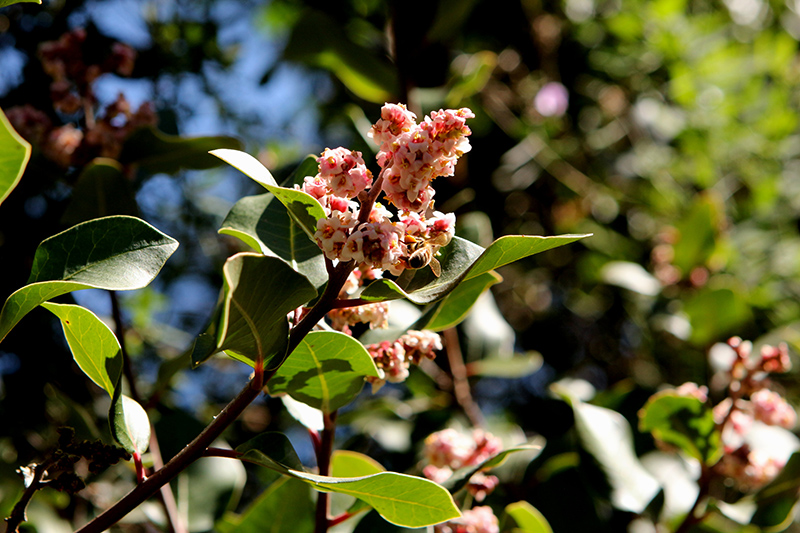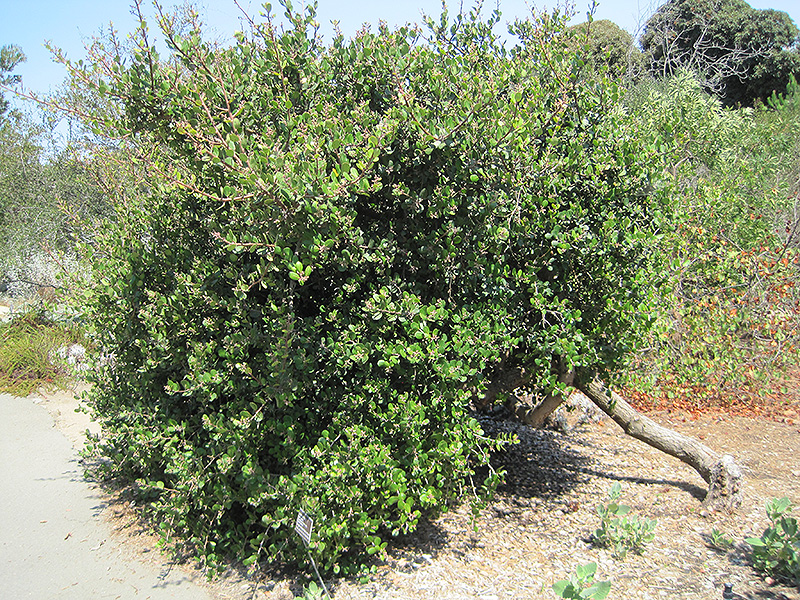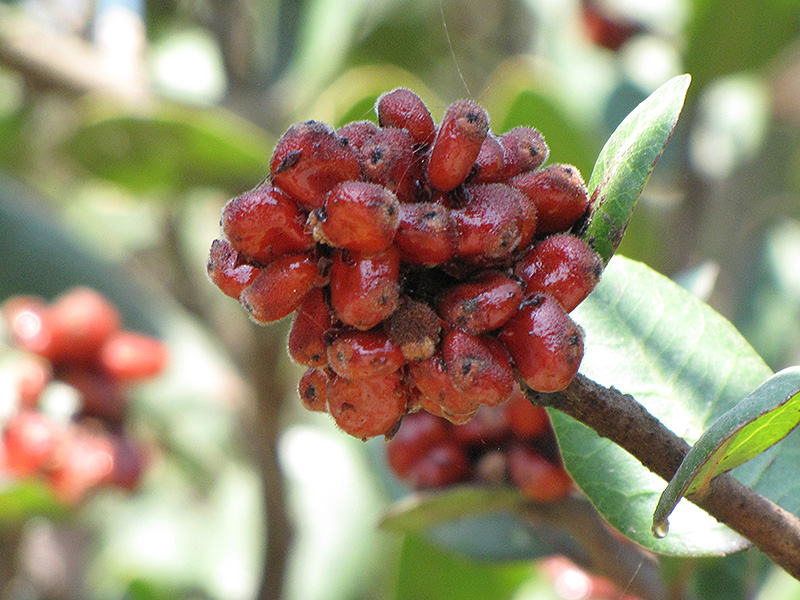Height: 8 feet Spread: 15 feet
Sunlight:
Hardiness Zone: 8a Other Names: Lemonade Sumac, syn. Schmaltzia integrifolia Description: An aromatic, native California shrub that grows quite large inland, but is low and spreading on the coast; leaves are mid to dark green and leathery; clusters of white to rose pink blooms in winter; easily shaped by pruning; great for slope stabilization Ornamental Features Lemonade Berry is primarily grown for its highly ornamental fruit. It features an abundance of magnificent brick red berries with orange overtones from late spring to late summer. It features subtle clusters of white flowers with rose overtones along the branches from late winter to early spring. It has dark green evergreen foliage. The fragrant oval leaves remain dark green throughout the winter. Landscape Attributes Lemonade Berry is a dense multi-stemmed evergreen shrub with an upright spreading habit of growth. Its average texture blends into the landscape, but can be balanced by one or two finer or coarser trees or shrubs for an effective composition. This shrub will require occasional maintenance and upkeep, and can be pruned at anytime. It is a good choice for attracting birds and butterflies to your yard. Gardeners should be aware of the following characteristic(s) that may warrant special consideration; Lemonade Berry is recommended for the following landscape applications; Planting & Growing Lemonade Berry will grow to be about 8 feet tall at maturity, with a spread of 15 feet. It has a low canopy with a typical clearance of 1 foot from the ground, and is suitable for planting under power lines. It grows at a fast rate, and under ideal conditions can be expected to live for approximately 30 years. This shrub does best in full sun to partial shade. It is very adaptable to both dry and moist locations, and should do just fine under average home landscape conditions. It is not particular as to soil type or pH, and is able to handle environmental salt. It is highly tolerant of urban pollution and will even thrive in inner city environments. This species is native to parts of North America.![]()
![]()
![]()
![]()
![]()
![]()
![]()
![]()
![]()
![]()
![]()
![]()
![]()
![]()
top of page
Louie's Nursery Menifee - Plant Finder
Characteristics
Applications
Features & Attributes
This tool is an online resource representing many of the varieties that we carry over the course of the season, and is intended for informational purposes only. Inventory varies seasonally, so we cannot guarantee that every plant will be in stock at all times - please contact the store directly for current availability. It does not include our entire selection of plants, so be sure to visit our store to see varieties that may not be represented on this list.
bottom of page


